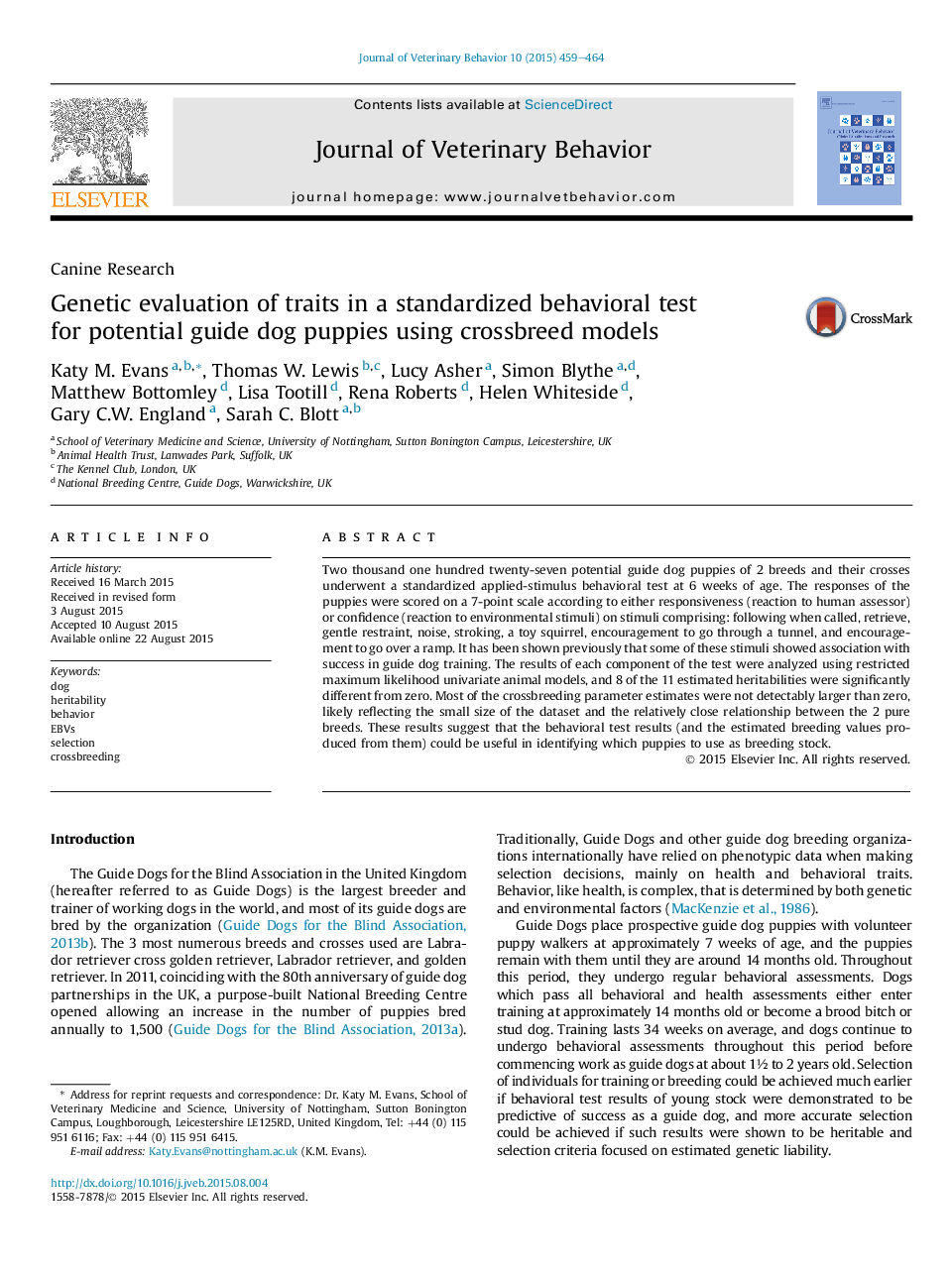| Article ID | Journal | Published Year | Pages | File Type |
|---|---|---|---|---|
| 8484349 | Journal of Veterinary Behavior: Clinical Applications and Research | 2015 | 6 Pages |
Abstract
Two thousand one hundred twenty-seven potential guide dog puppies of 2 breeds and their crosses underwent a standardized applied-stimulus behavioral test at 6Â weeks of age. The responses of the puppies were scored on a 7-point scale according to either responsiveness (reaction to human assessor) or confidence (reaction to environmental stimuli) on stimuli comprising: following when called, retrieve, gentle restraint, noise, stroking, a toy squirrel, encouragement to go through a tunnel, and encouragement to go over a ramp. It has been shown previously that some of these stimuli showed association with success in guide dog training. The results of each component of the test were analyzed using restricted maximum likelihood univariate animal models, and 8 of the 11 estimated heritabilities were significantly different from zero. Most of the crossbreeding parameter estimates were not detectably larger than zero, likely reflecting the small size of the dataset and the relatively close relationship between the 2 pure breeds. These results suggest that the behavioral test results (and the estimated breeding values produced from them) could be useful in identifying which puppies to use as breeding stock.
Related Topics
Life Sciences
Agricultural and Biological Sciences
Animal Science and Zoology
Authors
Katy M. Evans, Thomas W. Lewis, Lucy Asher, Simon Blythe, Matthew Bottomley, Lisa Tootill, Rena Roberts, Helen Whiteside, Gary C.W. England, Sarah C. Blott,
